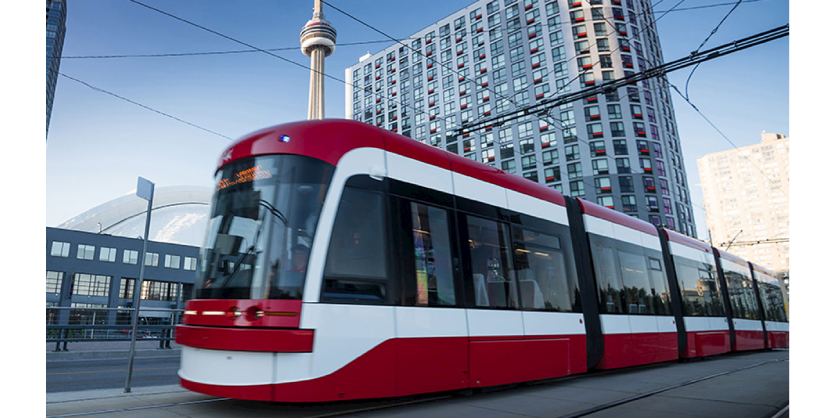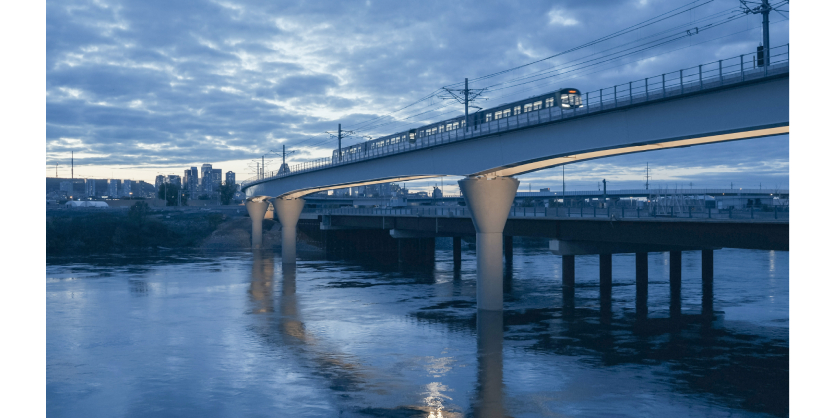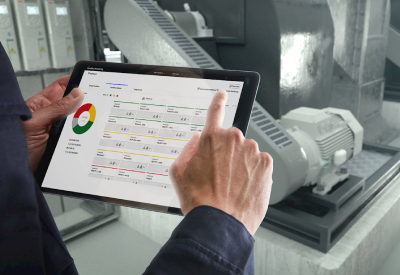Rethinking Rail for Tomorrow
October 2, 2023

By Martin Bussiere
The rail industry is in the midst of a transformation, and much like the electric car, the electric train is at the forefront of this change. Rail has always stood as an efficient mode of transportation, not only for passengers but also for freight. Remarkably, it remains the most fuel-efficient way to move goods over land, even as the industry moves towards reducing its reliance on diesel. In fact, Canada’s freight railways have impressively cut carbon emissions by 25.1%1 since 2005.
However, given the urgency of the global climate crisis, large rail infrastructure projects are increasingly demanding that suppliers take action to decarbonize and innovate ways to produce more energy-efficient trains.

Decarbonizing the Rail Sector: A Clear Trend
The industry is shifting towards electric-powered solutions. Over the next 10 to 15 years, we will see more and more rolling stock that is electrically powered. While the fully electric train exists, there are certain limitations to its application. On the other hand, diesel-powered locomotives continue to offer the range and power necessary for long-haul travel. Moreover, the prospect of hybrid solutions is gaining momentum to achieve energy efficiency gains.
Let’s look at the distinct attributes of each option and examine how this transition will unfold.
Montreal’s recently inaugurated REM (Réseau express métropolitain) passenger light rail project serves as a prime example of embracing the trend toward electrification. Its various systems such as the train’s propulsion system to its lighting, heating/cooling mechanisms, and safety controls, are fully electrically powered. This also includes ABB components that protect and distribute the power that makes the cars safer and more efficient for passengers.
Conversely, the challenge lies in moving massive freight trains and lengthy passenger trains across vast Canadian distances, especially in extreme weather conditions. Generating the required 6,000 horsepower to propel these heavy trains without diesel remains a technological hurdle. Furthermore, with over 38,000 diesel-powered locomotives in North America, transitioning is a complex process that merits consideration for established workforces and ongoing operations.
A Crucial Role for Electric-Diesel Hybrid Technology
In this dynamic landscape, ABB’s rail solutions play a pivotal role. Our collaboration with train manufacturers and major rail infrastructure projects facilitates the development of systems that consume less power or can utilize alternatives to diesel. We are pushing the boundaries by engineering more compact, lighter, and efficient products. These innovative solutions can be seamlessly integrated into existing rolling stock and infrastructure, resulting in reduced overall weight, and subsequently minimizing the power required to propel the train.
The transition from diesel to electric, or even hybrid solutions, will span multiple generations, yet existing diesel locomotives are continually growing more efficient with the integration of modern electrification systems. The scale may tip towards hybrid solutions if their economic benefits outweigh those of traditional diesel, fostering a climate of innovation.
Canada Leading with the Rail Pathways Initiative
Is it possible for Canada’s rail sector to achieve net-zero emissions by 2050, aligning with the Government of Canada’s decarbonization target? The Canada Rail Pathways Initiative, a collaboration between industry and government and a first globally, has outlined a comprehensive roadmap to guide the sector towards this ambitious goal. The initiative has established a national framework that offers both short- and long-term decarbonization solutions, acknowledging that a unified sector-wide approach is essential. Success hinges on the convergence of three overarching trends: low-carbon fuels, alternative propulsion, and efficiency improvements.
A Path Forward: Bridging Technology and Sustainability
Numerous technologies, although not yet fully realized, hold potential for deep rail decarbonization. For instance, while batteries and hydrogen have made significant strides in the automotive sector, their implementation in locomotives and passenger transit is still in its infancy in Canada and the United States. The ABB Global research and development team is at the forefront, exploring the potential of battery and hydrogen as energy sources for Canadian freight and passenger transit. However, to match the 6,000 horsepower hauling demands, a hybrid approach still remains necessary, incorporating diesel to bridge the gap.
At present, ABB is playing a leadership role by assisting manufacturers in building systems that serve as both complimentary to and alternatives for carbon fuel. Our existing electrification technology empowers rolling stock manufacturing and rail infrastructure customers to engineer fuel-efficient solutions or upgrade older systems to more efficient solutions with Auxiliary Power Units, Low voltage Power Supply and Battery Chargers, AC & DC Molded Case Circuit Breakers, AC & DC Relays and Contactors, DC Switches and low voltage control products, Traction Converters, Energy storage systems, and Traction Motors and Generators.
While alternative propulsion technologies are anticipated to eventually propel rail decarbonization, efficiency improvements will remain a focal point during the ongoing shift away from diesel and towards electric power.
More Information
For more information about ABB Canada’s Rolling Stock solutions, visit, ABB Canada | Railway
Related Story
ABB: FLIRTing With the Future of Rail
According to EPA estimates, 29% of all CO2 emissions come from transportation, the largest share of any sector of the economy. It’s not surprising then that the industry has been in the spotlight as suppliers, operators and governments seek to improve efficiency and cut emissions. Rail travel has long been one of the most—if not the most—energy-efficient methods for moving people and things, but while municipal rail transit systems make use of electric drive systems, long-haul trains are another story.





